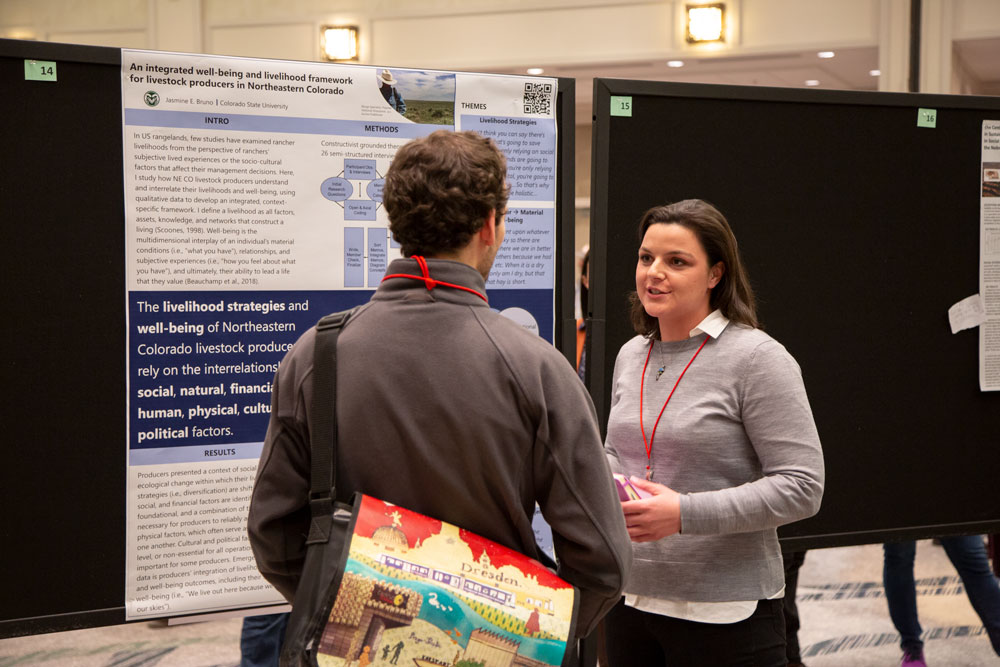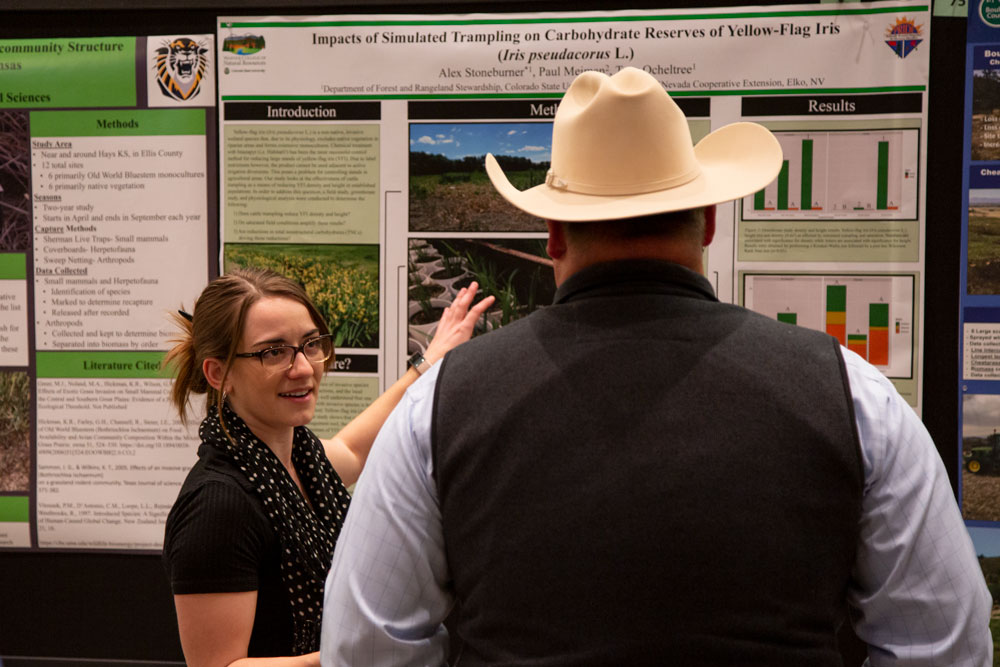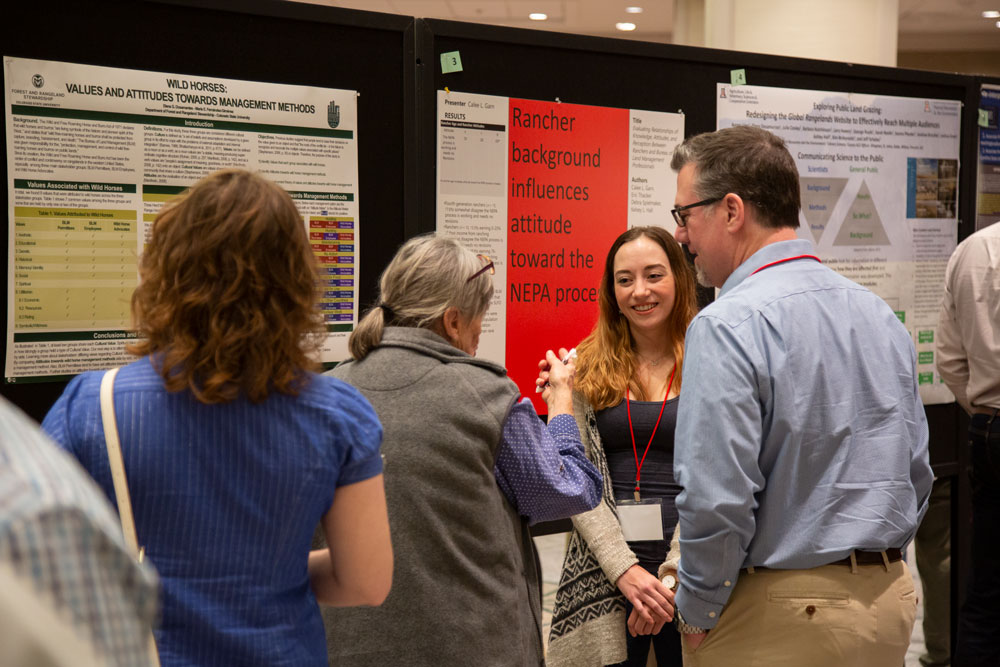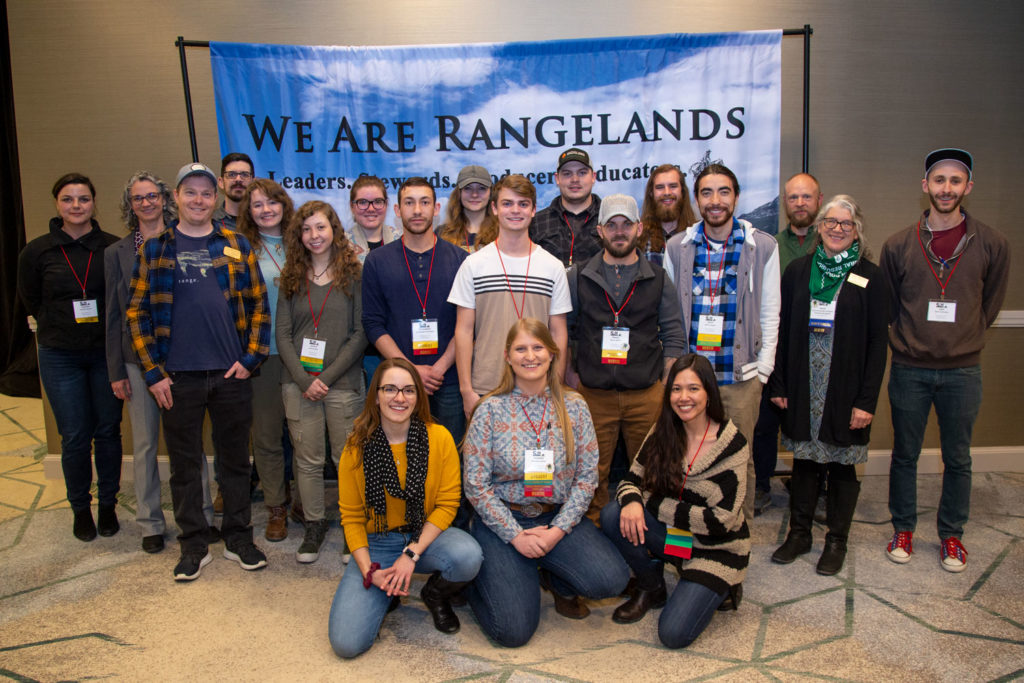
The annual meeting for the Society for Range Management (SRM) professional society was held in Denver this year, giving Colorado State University rangeland stewards home field advantage. This society includes membership from land managers, scientists, educators, students, producers and conservationists all working to sustain rangeland ecosystems around the world. The 17 CSU undergraduate and graduate students in attendance, along with staff, faculty and alumni participated in established traditions, and also led the start of new initiatives during the five-day event.
SRM Outstanding Achievement in Land Stewardship Award
SRM recognized local Colorado stewards with one of the top awards at the meeting. Professor María Fernández-Giménez along with a group of CSU rangeland alumni and partners received the SRM Outstanding Achievement in Land Stewardship Award for the Collaborative Adaptive Rangeland Management Stakeholder Group.
This collaborative was initially facilitated by Fernández-Giménez, and Alumnae Aleta Rudeen (M.S. ’09), Emily Kachergis (Ph.D., ’11), and Hailey Wilmer (M.S. ‘13, Ph.D. ’16) in 2012. The group has since expanded to 11 members representing ranchers, conservation/environmental organizations and land management agencies. They were recognized for their efforts in showing how management-science partnerships can respond to current and changing rangeland conditions. Fernández-Giménez said receiving this award in Colorado was very meaningful.
“This group has committed to collaborative learning over the long haul and the process they have developed for incorporating all stakeholders’ perspectives in each decision,” she said. “Advocating for each other’s needs over the long term and across the landscape can serve as a model for other natural resource collaborations across the country.”
Undergraduate Students
The annual SRM meeting schedule provides many opportunities for undergraduate students to practice their rangeland knowledge and skills, as well as network with professionals in their areas of interest. Despite an early 6:30 a.m. start time, CSU students participated in the annual Undergraduate Range Management Exam. This year, the exam was restructured to a one-hour time frame and 49 questions, which allowed students the opportunity to attend other opening sessions.
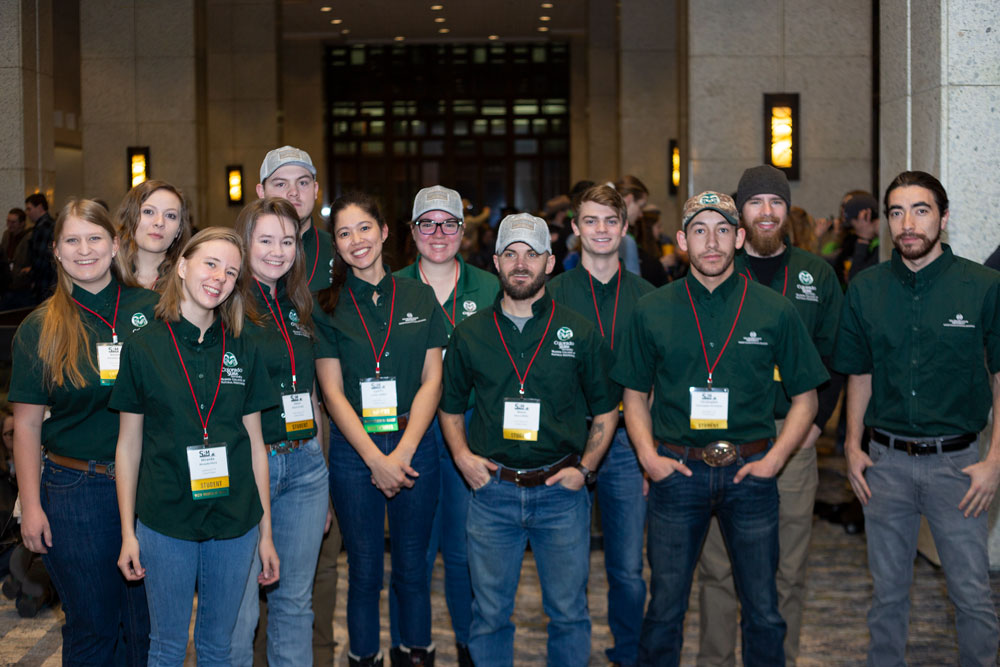
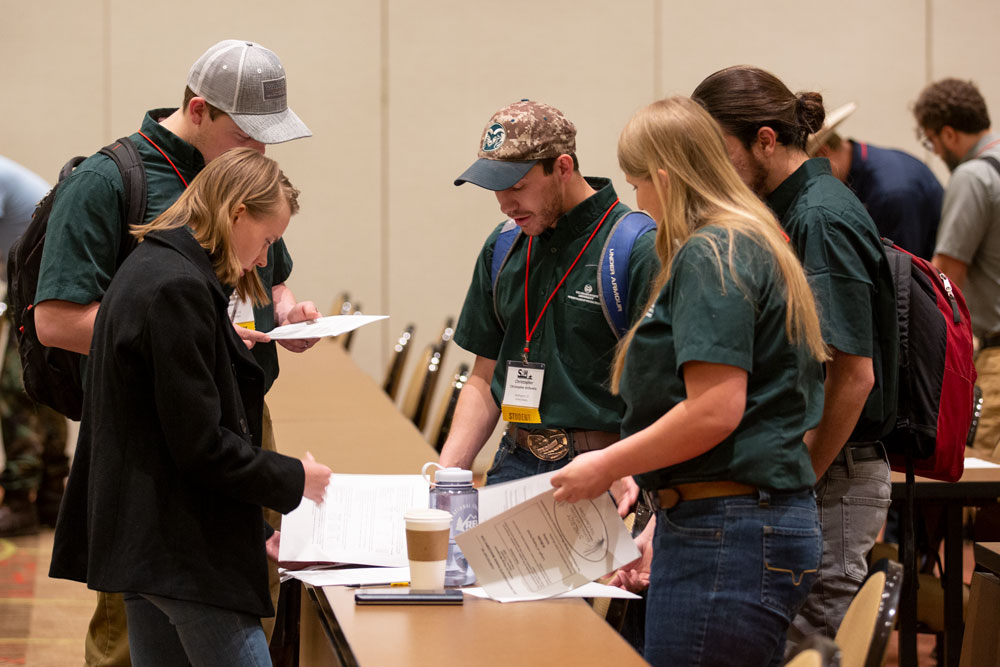
Three CSU students and one recent alumna also participated in the Plant Identification test where they were given two hours to identify 200 different mounted plants. Colorado Forest Restoration Institute Research Associates Marin Chambers and Kat Morici supported the student’s preparation for this contest throughout the academic year.
For several years, the CSU Range Ecology Club has been one of the few student groups to host a booth at the event’s trade show. The club has used this as a fundraising opportunity and a way to promote the university’s rangeland programs.
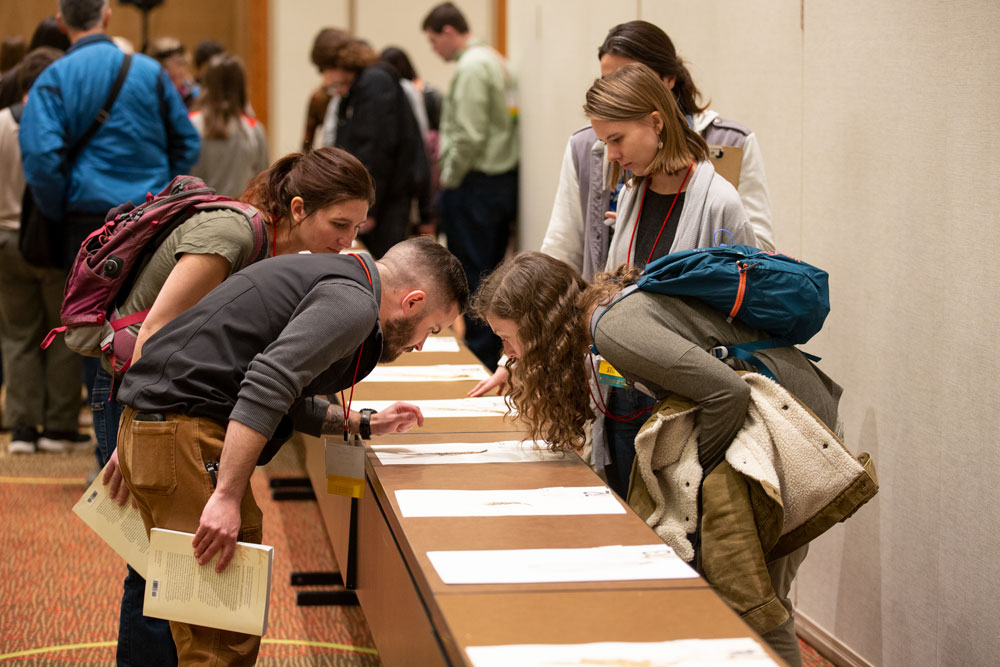
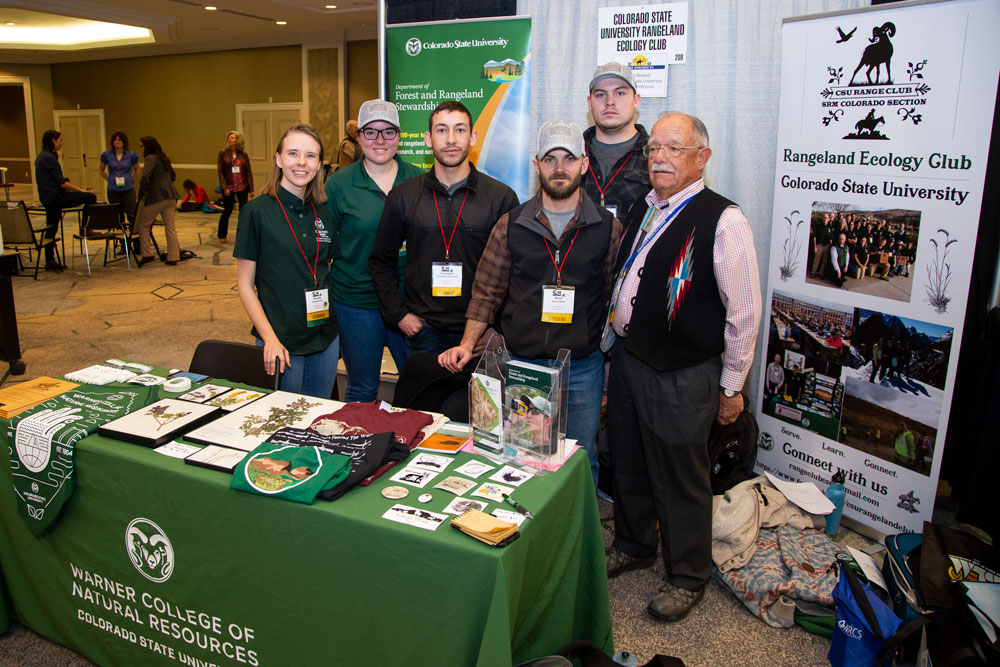
Public and private agency employers were also on-site to recruit and interview students for future positions. Seniors Alexis Emslie and Samantha Maloney interviewed for positions with the National Resource Conservation Service. This federal agency provides technical assistance to ranchers, farmers and other private landowners and managers. Emslie and Maloney received verbal job offers through this direct hiring authority on the spot instead of through an online application process.
“I would highly recommend to those interested in pursuing a career with the federal government to attend SRM and other conferences where direct hiring occurs,” Emslie said. “I was given the chance to interview with top individuals from the NRCS agency. This is an exciting time in my career and creates a pathway for success.”
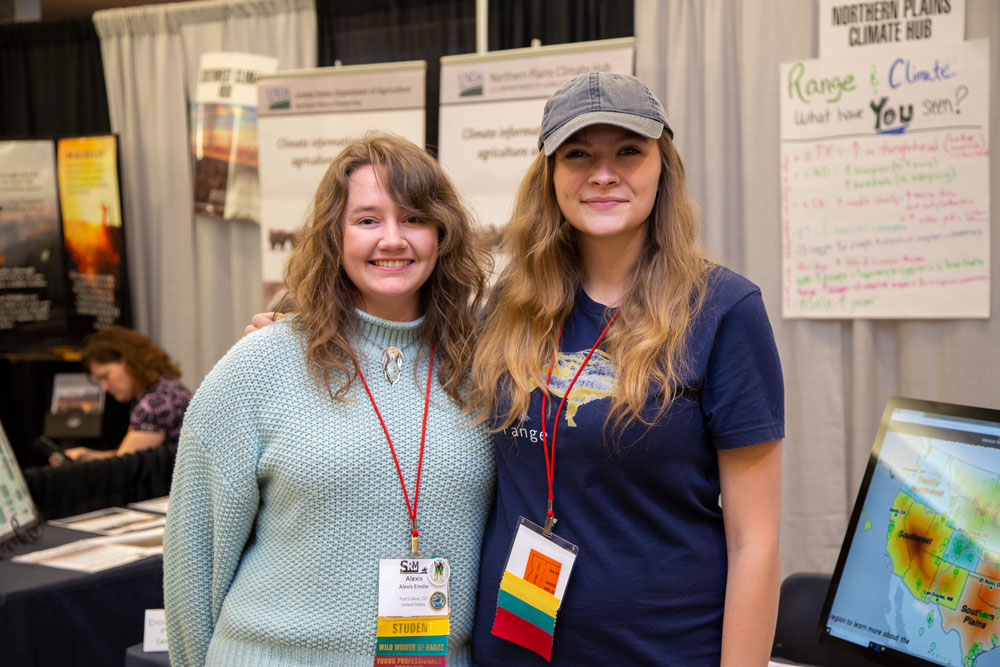
Graduate Students
It was the third year Ph.D. candidate Jasmine Bruno presented different aspects of her doctoral research project. This year her poster showed the changing identities and livelihoods of livestock producers in northeastern Colorado.
Master’s student Alex Stoneburner presented her initial observations from experiments uncovering the possible benefits cattle trampling can have on controlling Yellow-Flag iris, a non-native, invasive wetland species. Fellow student Elena Dosamantes worked on her degree remotely in Arizona last fall and was involved in two posters, one with CSU and one with the University of Arizona. Her CSU master’s research poster reported group values and attitudes from ranchers, managers and advocates regarding wild horse management methods, and the Arizona poster reported on a new Global Rangelands website to better communicate rangeland disciplines.
“Seeing my name next to remarkable advisors on these posters makes me realize I’m able to work with the most outstanding scientists in my field, but it also made me realize how much more I have to learn,” said Dosamantes. “I am beyond grateful to have the opportunity to be learning from the best.”
Two other doctoral students offered oral presentations about their research. Justin Ziegler, who specializes in forest modeling, was invited to discuss his unique expertise with modeling fire scenarios. In his ignite session, he joined like-minded speakers and gave a five-minute synopsis about his work.
Jake Courkamp, a third time SRM meeting attendee, gave an extended presentation in a symposium he organized with other industry professionals and land managers. Courkamp explained some early doctoral research project results from testing a new herbicide that specifically targets invasive cheatgrass.
His experimental plots continue to show substantial reductions in cheatgrass cover three years after initial treatment of the herbicide indaziflam. He also tested the chemical’s impact on native plants and is finding that species diversity is not significantly different from untreated control plots. Courkamp said his audience was very interested in these positive results.
“It felt really good to present again this year being a student veteran at the meeting. It was definitely my best showing as a presenter,” he said. “I was happy about how well attended our session was and how good the discussion was after the talks ended. It was standing room only and I had to cut off the discussion when our time slot ended, so that was great!”
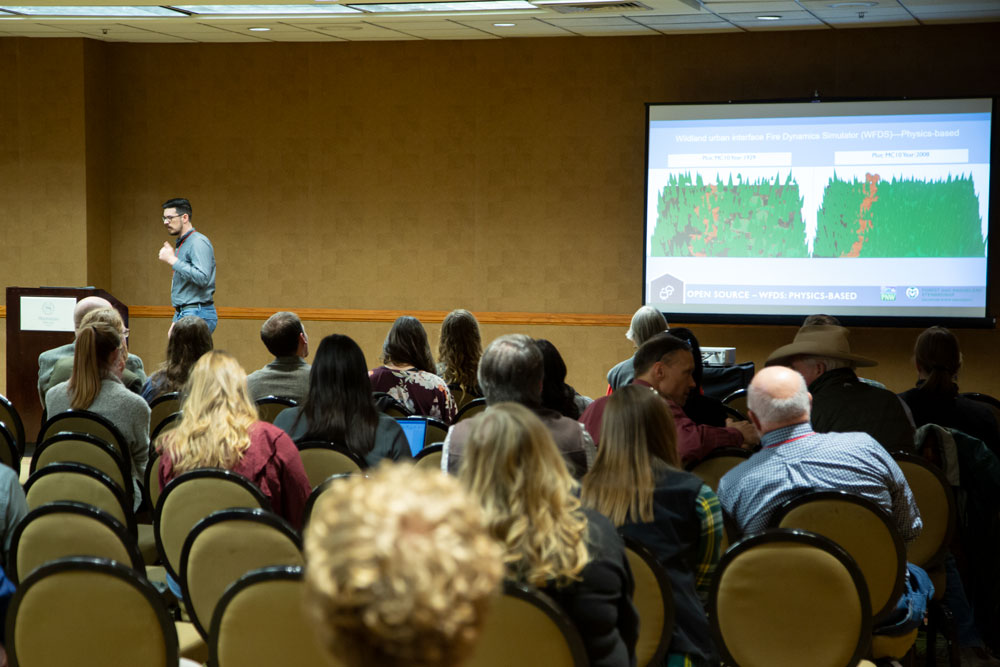
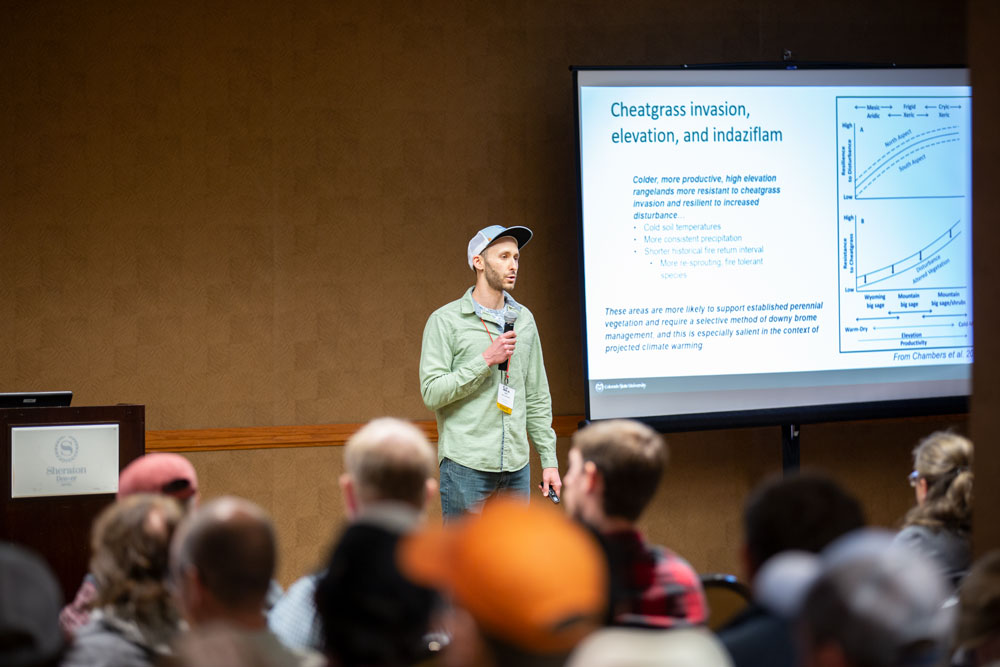
New SRM initiatives celebrate diversity and the benefits of prescribed fire
A new initiative that master’s student Ariana Gloria assisted with bringing to fruition was a “We Are Rangelands – Diversity Makes Us Stronger” booth at the SRM tradeshow. Gloria has been a part of the Diversity Taskforce for the national SRM organization as well as the local Colorado SRM chapter’s diversity committee. This initiative was jointly funded by the FRS department, The Nature Conservancy, USDA Forest Service Office of Civil Rights and CSU Extension.
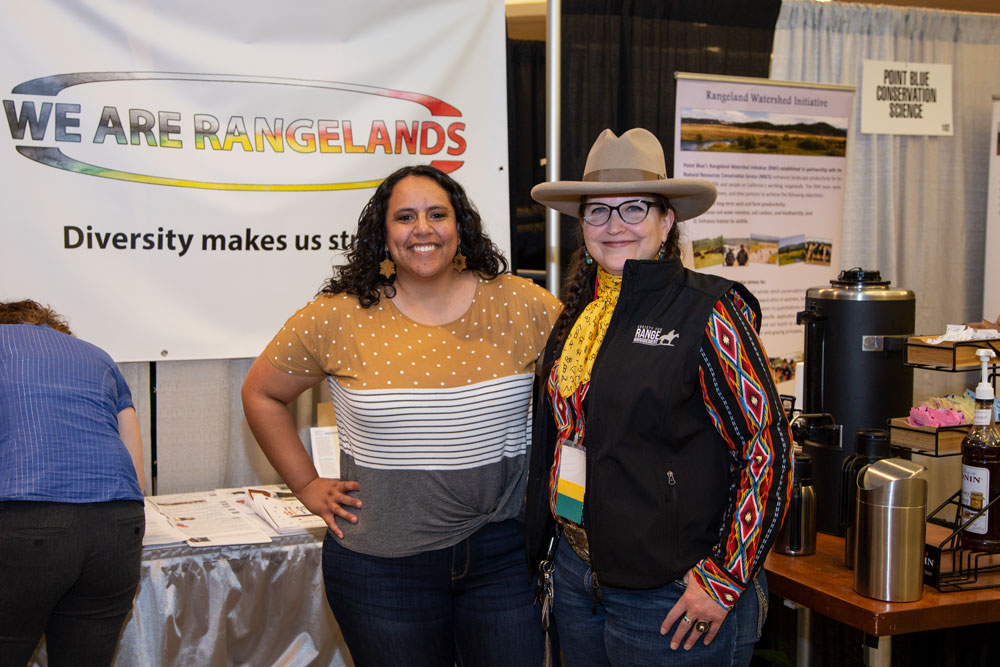
The booth offered materials showing how individuals from many backgrounds and identities are contributing to rangeland science and management. Gloria said having a space that could foster more capacity for and understanding about an inclusive rangeland community was a positive way their profession can move forward.
“It was a place that was celebratory and highlighted the many diverse backgrounds members of SRM come from,” she added. “We wanted to foster community where everyone is welcome and provide opportunities for students and young professionals to see their future professional careers and a path forward to achieving that.”
There is broad effort across natural resource fields to include and embrace all lived experiences and skills that contribute to the stewardship for our planet. Gloria said she received many positive comments that the booth was meaningful since it hadn’t been done before. She hopes this initiative can continue each year.
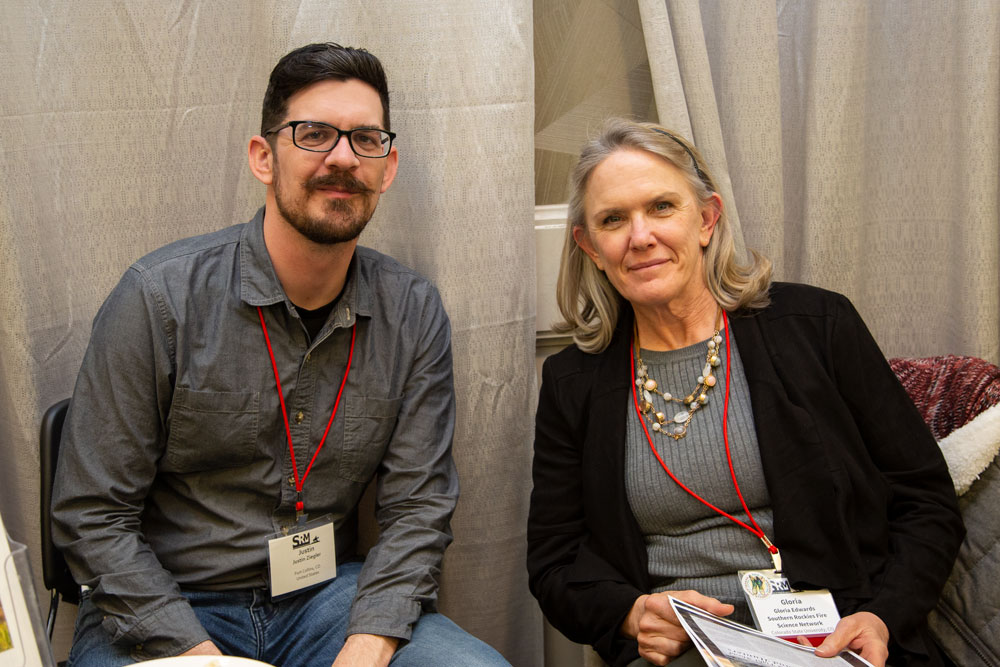
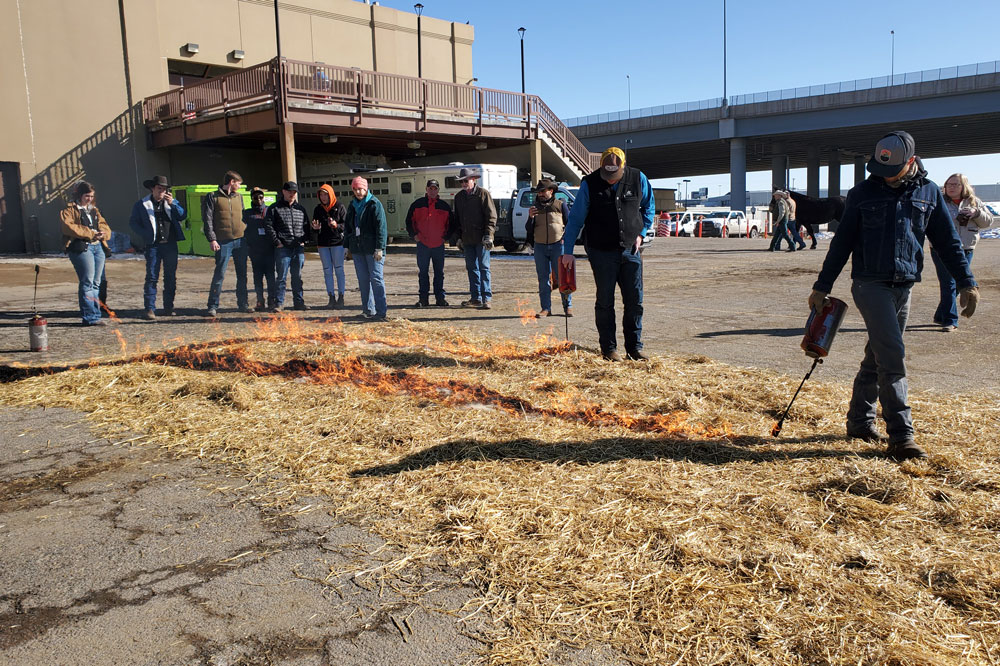
Gloria Edwards of the Southern Rockies Fire Science Network (SRFSN) co-developed a unique prescribed fire workshop and demonstration with the Great Plains Fire Science Exchange for the last day of the SRM meeting. Over 60 people learned about the benefits and challenges of prescribed fire, fire research on short grass prairie, prescribed fire equipment and crews, and rancher’s techniques for burning on private land. Small straw bale burns in the parking lot simulated real-life burn methods and effects.
“We hope to refine this workshop for future SRM meetings as well as other fire science exchange events,” Edwards said. “There’s nothing like learning how to use fire wisely for land management and safety.”
In sharing CSU’s unique areas of expertise for rangeland systems on home soil, faculty, staff, students and alumni within the FRS department contributed to greater conversations SRM is having as they move this professional society forward.
